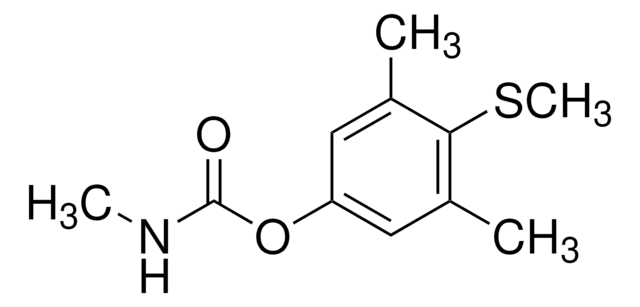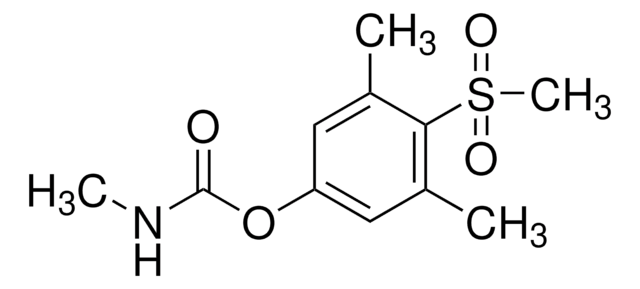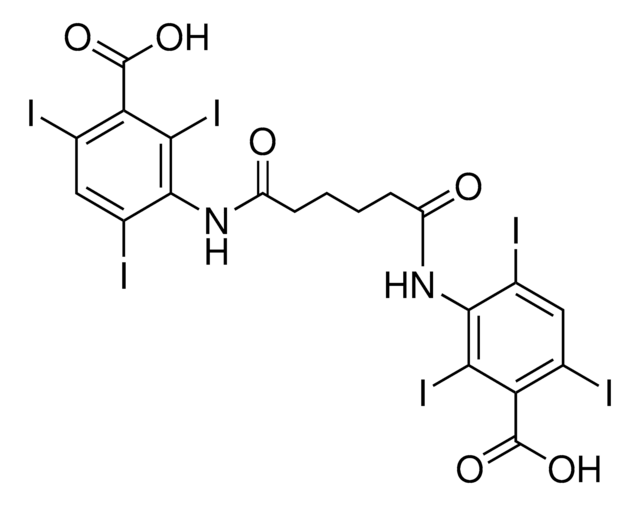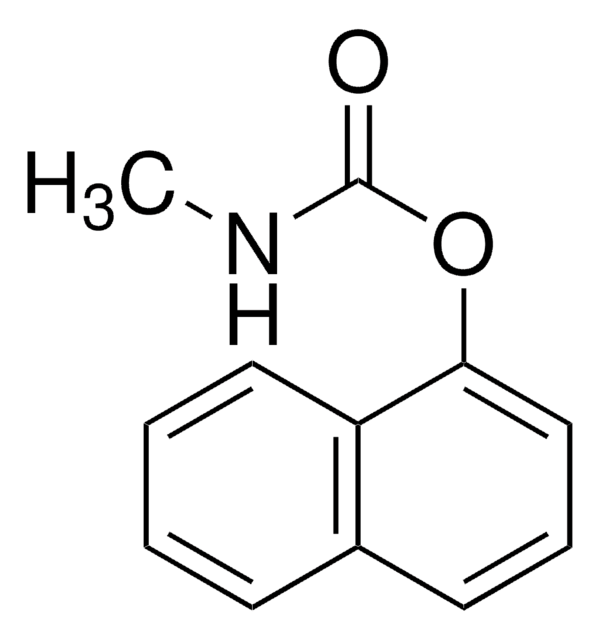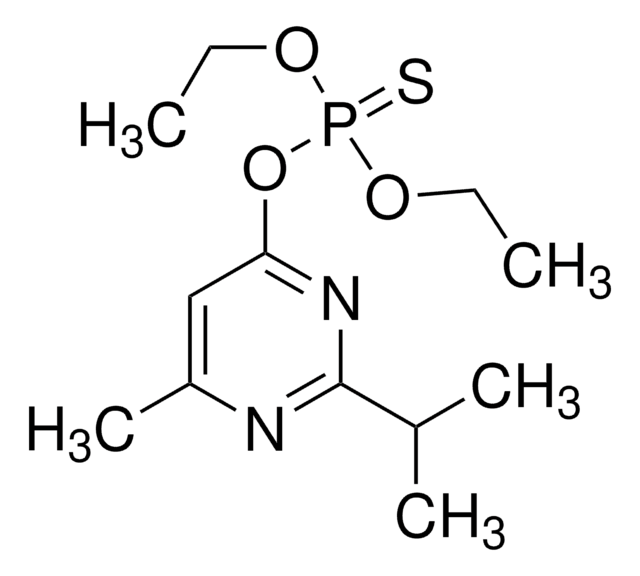31097
1-Naphthol
PESTANAL®, analytical standard
Synonym(s):
α-Naphthol, 1-Hydroxynaphthalene
About This Item
Recommended Products
grade
analytical standard
Quality Level
vapor density
4.5 (120 °C, vs air)
vapor pressure
1 mmHg ( 94 °C)
product line
PESTANAL®
assay
≥98.0% (GC)
autoignition temp.
1007 °F
shelf life
limited shelf life, expiry date on the label
expl. lim.
5 %
technique(s)
HPLC: suitable
gas chromatography (GC): suitable
bp
278-280 °C (lit.)
mp
94-96 °C (lit.)
application(s)
forensics and toxicology
pharmaceutical (small molecule)
format
neat
SMILES string
Oc1cccc2ccccc12
InChI
1S/C10H8O/c11-10-7-3-5-8-4-1-2-6-9(8)10/h1-7,11H
InChI key
KJCVRFUGPWSIIH-UHFFFAOYSA-N
Looking for similar products? Visit Product Comparison Guide
General description
Application
- In human urine by a rapid and automated method based on coupled-column liquid chromatography (LC-LC) with fluorescence detection.
- In canned fruit juices by reversed-phase high performance liquid chromatography with diode-array detection.
Legal Information
Not finding the right product?
Try our Product Selector Tool.
signalword
Danger
Hazard Classifications
Acute Tox. 3 Dermal - Acute Tox. 4 Oral - Aquatic Acute 1 - Aquatic Chronic 3 - Eye Dam. 1 - Skin Irrit. 2 - Skin Sens. 1A - STOT SE 2 Oral - STOT SE 3
target_organs
Kidney, Respiratory system
Storage Class
6.1C - Combustible acute toxic Cat.3 / toxic compounds or compounds which causing chronic effects
wgk_germany
WGK 1
flash_point_f
257.0 °F - closed cup
flash_point_c
125 °C - closed cup
ppe
dust mask type N95 (US), Eyeshields, Faceshields, Gloves
Choose from one of the most recent versions:
Already Own This Product?
Find documentation for the products that you have recently purchased in the Document Library.
Customers Also Viewed
Our team of scientists has experience in all areas of research including Life Science, Material Science, Chemical Synthesis, Chromatography, Analytical and many others.
Contact Technical Service
